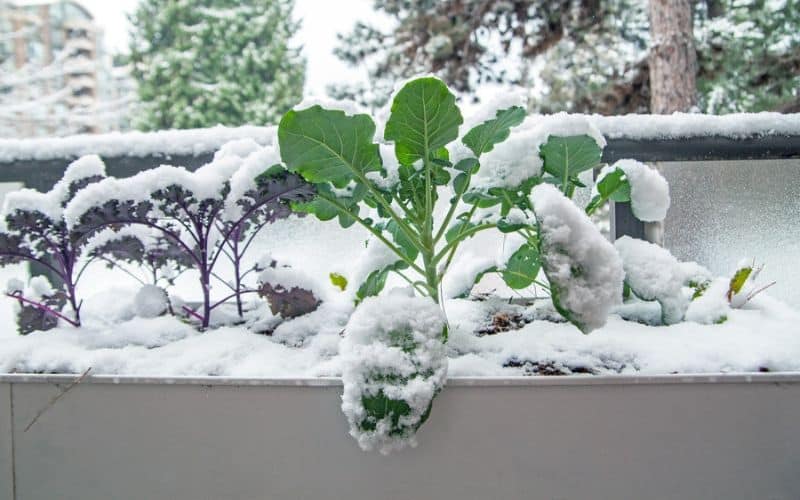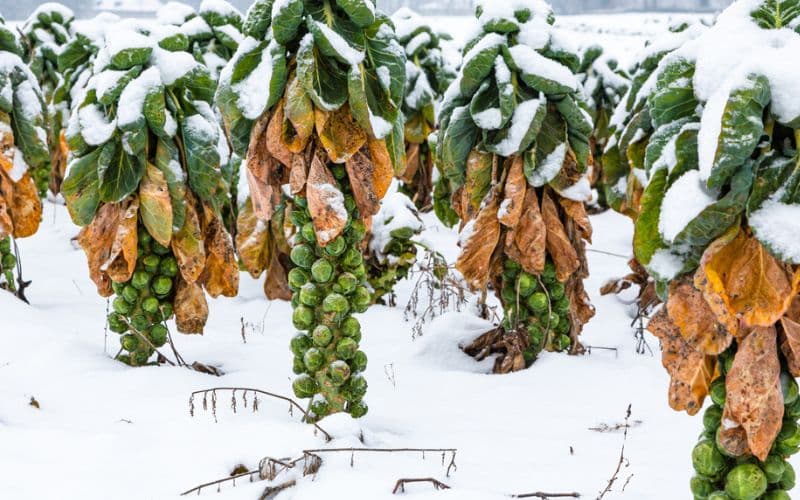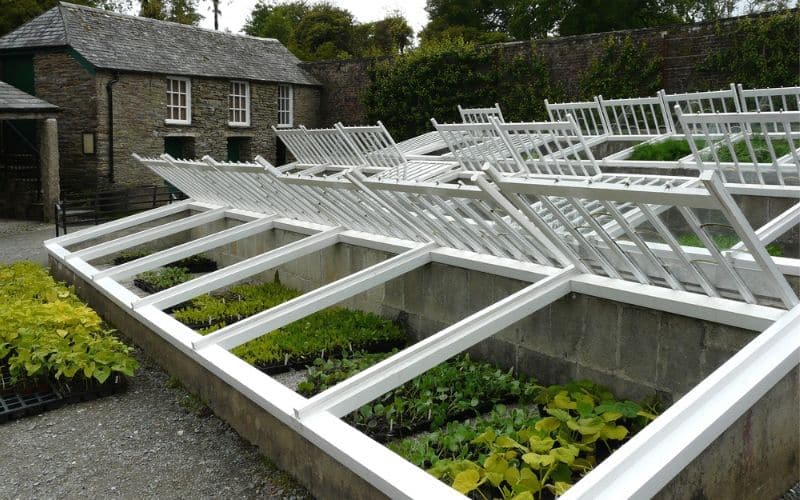
Searching for some crops that will flourish in cold-weather for your vegetable garden this season? The winter months can be testing for plant growth, particularly in vegetable gardens. Nonetheless, it’s not necessary to hold off until spring or summer to grow vegetables: winter cultivation is seamless once you have the appropriate species.
There are many vegetables that are resilient to the cold and can be grown during the winter, contingent on your hardiness zone. With thoughtful organization and groundwork, you can yield vegetables throughout the winter season.
What To Consider When Having Winter Vegetable Gardening
Check your area’s exposure to heavy frost and strong winds, and then consider the advantages and disadvantages of potting vegetables indoors. You might also want to consider constructing your own greenhouse or cold frame to protect your veggies from the cold sets.
When choosing your vegetables, look for plant markers and seed packets that mention “cold season” or “cool” in their descriptions. These vegetables are adapted to grow and flourish in colder weather instead of warm conditions. Some crops can survive the winter because they need an extended cold period, called vernalization, to bloom and seed for the spring season. This way, growing vegetables during winter can be pretty productive.
Temperatures
Growing winter vegetables can be challenging in a southern location due to rapid temperature fluctuations. These vegetables can rapidly decay both in and above the ground. Using a row cover can help regulate the temperature difference between the air and the soil, making it better suited for these plants.
To effectively harvest root vegetables during chillier months, it’s imperative to safeguard the surrounding soil from deep frost penetration. You can spread a generous layer of leaves or straw over your garden beds. This method effectively prevents frost from damaging winter vegetables.
Planting Period
To determine the precise date to plant seeds and seedlings for your winter garden, identify the average date of the first frost. This should ideally be done 6 to 8 weeks before the frost. Certain leafy vegetables like chard, parsley, and rocket are planted in the late summer or autumn and can survive the winter with appropriate protection.
The Best Winter Vegetables To Grow
Winter temperatures greatly dictate the assortment of crops we can cultivate. A range of hardy vegetables can thrive and be harvested throughout the icy winter season. Ensuring these vegetables reach a considerable size before the initial frost allows for continued harvest as long as they remain reachable.
Some types of these vegetables can even be overwintered to be harvested in the late winter or early onset of spring.
Kale
Kale is a simple plant to cultivate, and its taste is even enriched by cold weather. It can withstand temperatures as low as 5°F (-15°C), even without protection. The optimal time to kickstart planting kale is six to eight weeks before the first frost hits.
For a successful winter harvest, sow a generous amount of kale seeds in soil with a slightly alkaline pH in the early or middle phase of August. While kale typically survives in freezing temperatures, shielding the leaves from extreme snowfall is advisable to avoid any damage. Plus, ensure that your winter kale is grown in an area that receives full sun or is partially shaded.

Brussels Sprouts
Brussels sprouts can withstand brief instances of extreme freezing. However, it is advisable to harvest them early in winter for prolonged freezing periods. Plant these sprouts around 100 days before anticipating the first frost. From March to May, sow Brussels sprouts in seed trays or modules, and once they are large enough to manage, transplant them with a 60cm spacing each and 75cm between each row.
Stake the plants firmly to protect them against wind rock. Harvest the Brussels sprouts after the first frost to enjoy them at their most flavorful.
Mustard Greens
Frilly mustards make a delightful and texturally enriching inclusion in winter salads and sauces. Generally, most mustard green varieties can endure light frosts below the 20-degree mark. However, they struggle to withstand harsh freezes.
For those not fans of the potent, spicy taste associated with summer mustards, the milder, sweeter flavour of winter-grown mustard greens, which become sweeter in cold conditions, will be a pleasant surprise. Comparable to spinach, those mustard varieties with curly or crinkly leaves exhibit greater resistance to cold than straight-leaf or frilly types.
Carrots
Plant your carrots in the late summer for ample time to grow. They won’t experience much growth once the cold weather kicks in. Ensure that some robust and well-sized carrots are left in the ground to last through the winter, and cover them with a few inches of salt hay or straw to keep them warm. In particularly freezing climates, a floating row cover or cloche can offer double the protection.
Carrot seeds are notoriously small, making evenly-spaced planting a challenge. It’s crucial to thin out your crops, but this can be done slowly by harvesting throughout winter, allowing the remaining seedlings to have additional space to grow by spring.
Winter Cabbages
Seed or transplanted seedlings, which are usually initiated in greenhouses, can be used to grow cabbages. Opting for seedlings is a better choice for regions with shorter farming periods as this gives the cabbage ample time to reach maturity. Winter Cabbage, a cold-tolerant variety that is simple to cultivate at home, is among the most beloved kinds of cabbage.
Plant the seeds of Winter Cabbage in the latter part of summer to grow it over the winter. Guard against flea beetles, white butterflies, and white flies by using a fine mesh. Winter Cabbages need less hydration compared to the ones grown in spring.

Parsley
Plant parsley during mid to late August for bountiful winter harvests. The herb has a taproot, hence it is suggested to plant it in soil that is deeply dug and enriched with compost for best results. Its highly nutritious leaves can be used fresh all through the winter.
To make your harvest last longer, pick the outside leaves and protect the plant with a cloche when the temperature drops below freezing.
Chicory
Chicory, a versatile winter salad ingredient, can be prepared either cooked or raw. The three unique forms of chicory are ‘forcing’ chicory, primarily grown for their full hearts and suitable for blanching, red chicory or radicchio, ideal for adding colour to salads, and ‘non-forcing’ or sugarloaf chicory, which can be consumed raw or used in various cooking methods.
If planned as a winter crop, sowing of the ‘non-forcing’ chicory should be done thinly at a depth of 1cm in rows that are 30 cm apart during July and August. Seedlings should be thinned out maintaining a distance of 25-30cm between the plants, and the area should be kept devoid of weeds. Using a cloche in fall can help prolong the harvest season.
Arugula
Arugula is a common ingredient in many spring mix salads with its distinct nutty flavour and oak leaf shape. However, it actually thrives more in cooler weather conditions. Given protection from frost, Arugula can be grown all winter long. Start planting in increments of two weeks, beginning six weeks ahead of your area’s expected frost date. When the temperatures start nearing freezing, shelter the plant with a cloche or floating row fabric. The environment within a greenhouse is also ideal for the growth of Arugula.
Like various other winter greens, Arugula allows for continual harvesting throughout its growth period, given that the central growing point is left intact. Each time you harvest, leave approximately 2″ of the stem behind.
Lettuce
Winter lettuces flourish in late summer and early autumn since they don’t need to worry about extreme heat causing them to bolt. The challenge is often the time of planting because sowing seeds in August might sometimes coincide with the high temperatures of midsummer. This issue can be overcome by planting your lettuces in seed trays in cooler areas and relocating them when the weather cools. Alternatively, a shade cloth can also be a solution if the temperatures escalate.
When winter weather draws near, it is advisable to protect your lettuce with cloches or floating row fabric. Of all the settings, lettuce usually performs best when planted in a greenhouse.
Onions
Onions are among the crops that can successfully overwinter, as long as the right varieties for overwintering are selected. Their growth is stimulated by the longer days at the end of winter, preparing them for harvesting in late spring. By the end of August, you should transplant seedlings into your garden. If temperatures drop below -10 F or -23 C, use straw mulch or floating row covers for protection.
Spinach
Plant ‘Bloomsdale’ or other cold-tolerant spinach varieties approximately six weeks before the first expected frost, allowing the plants to grow well.
Use low hoops with plastic sheeting or a floating row cover to keep your plants safe and enjoy a winter harvest. Alternatively, you can leave the spinach plants unprotected, let the leaves wither, and they’ll sprout again in early spring. Sowing spinach in a cold frame or greenhouse can enable winter harvests of young salad greens. Plan to plant every fortnight for continuous harvests.
Leeks
Leeks are suited for every winter vegetable garden. These relatives of onions can endure frost, even deep frosts, without any protection. Providing extra insulation to these tasteful, long alliums can be done by mulching and “hilling up” the soil.
However, the long growing period can be a drawback to leeks. Since their maturation takes about 100 days, it is crucial to start cultivating leeks as early as July.

Growing Tips For Your Winter Vegetable Garden
Cultivating vegetables in winter can prove to be a challenge in all regions except the warmest. Cold frames, low tunnels or hoops, cloches, unheated greenhouses, and even just a basic mulch layer can act as protection to help extend the growing season and help achieve an early spring harvest.
Even without a greenhouse or cold-frame at your disposal, you can grow in winter. However, for semi-hardy, leafy crops, ensure that you have fleece or cloches for cover to protect them during forecasted cold snaps. While these leafy crops may not grow during the winter, as temperatures rise back up in the spring they will resume, allowing for an early bounty of leaves when there is little else available.
Plants can take hits from not only frost and snow but wind as well during the winter. A windbreak, strategically planting crops in a sheltered location, or employing the use of polytunnels or row covers can provide additional defense when growing vegetables in adverse conditions.
Conclusion: Planting Winter Crops During Cold Weather
In conclusion, your winter gardening efforts should not be delayed due to weather conditions. By initiating your garden planning from midsummer itself and selecting the best vegetables, you can be successful with your winter growing. It’s essential to pair these plants with suitable covers and integrate them with season extenders to shield them from the cold. As the winter ceases, your matured plants safeguarded through the cold weather, will gradually revive. They will sprout energetically as the warmth and daylight lengthen, giving you an early bounty to rejoice just as the new cultivation season commences.
Colin Macmillan is a seasoned entrepreneur and the CEO of Riverwood Landscape, a leading landscaping company based in Canada. He has been at the helm of the company since leaving high school, demonstrating his strong leadership skills and business acumen.
Colin’s expertise lies in various aspects of landscaping, including lawn care, interlocking, sod installation, and commercial maintenance. His hands-on approach and dedication to the craft have been instrumental in building Riverwood Landscape into a reputable brand.
One of his most notable achievements is the creation of a successful landscape franchise that services multiple locations. This accomplishment underscores his strategic thinking and ability to scale operations effectively.
Colin has also had the privilege of working with Guelph Hospital for landscaping and maintenance, a testament to the trust and reliability that his company has earned over the years.
His professional mission is to offer the best services and experiences for customers, a goal that he tirelessly pursues. Colin’s commitment to excellence and customer satisfaction continues to drive the growth and success of Riverwood Landscape.








